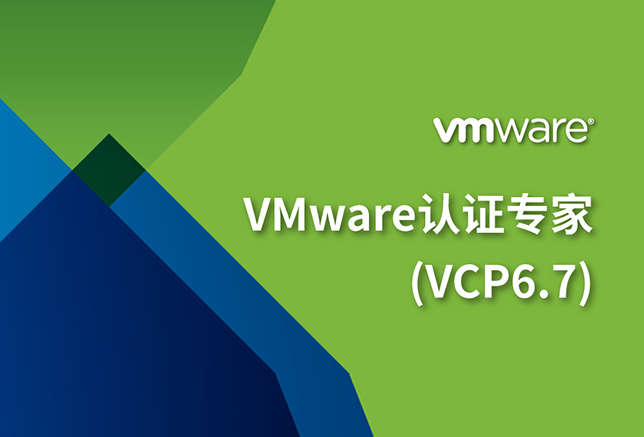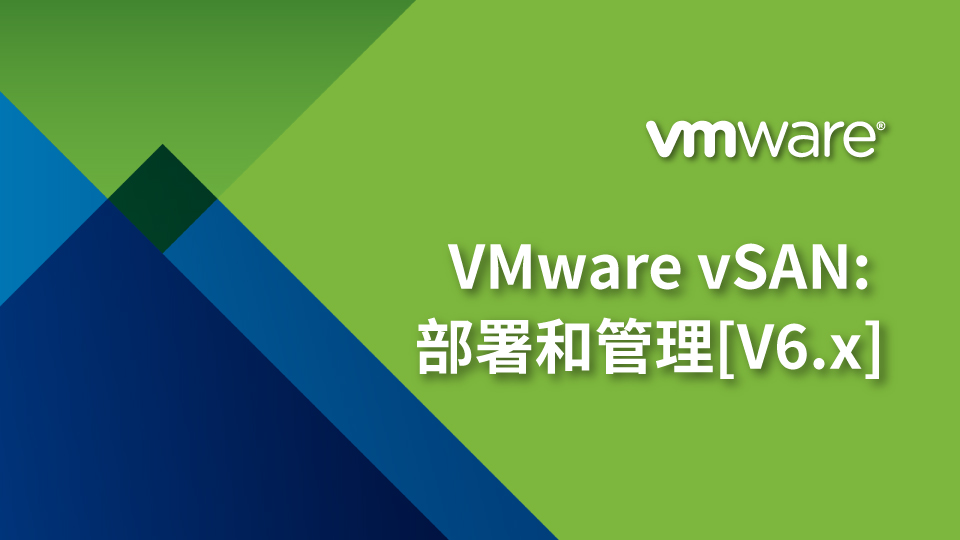VMware vSAN: 部署和管理[V6.x]
企业内训新闻
热门课程
全部课程
视频中心
立即预约
考试服务
企业培训
关于我们
0551-65770388
课程名称:VMware vSAN: 部署和管理[V6.x]
开班类型:周末+脱产班
推荐星级:5星
课程时长:5天/40课时
授课方式:面授、远程
-
课程介绍:
VMware vSAN作为VMware软件定义存储解决方案,是VMware软件定义数据中心(SDDC)的重要组件,在本课程中将主要讲解VMware vSAN6.x 的部署、体系结构、管理及相关策略的使用,同时你还将学习到vSAN故障排除的各种方法和应用场景。本课程将通过大量的动手实验帮助你快速掌握相关vSAN的相关技术。
培训目标:
●描述 vSAN体系结构
●识别 vSAN功能和用例
●配置 vSAN网络组件
●配置 vSAN群集
●在 vSAN数据存储上部署虚拟机
●配置虚拟机存储策略
●执行持续的 vSAN管理任务
●配置 vSAN加密
●控制 vSAN重新同步任务
●创建和管理故障域
●使用 vSAN运行状况服务来监视运行状况和性能
●配置扩展的群集并观察故障转移方案
●描述 vSAN与 VMware vSphere®功能和其他产品的互操作性
●规划和设计 vSAN群集
●了解组件之间的关系
●了解 vSAN对象的放置
●了解对象状态之间的差异
●解释存储策略如何影响对象状态
●预测特定故障如何影响对象状态
课程大纲:
第一天 规范高效的基础应用
l Introductions and course logistics
l Course objectives
l Describe the software-defined data center
vSAN介绍
l Describe basic vSAN architecture and components
l Describe the differences between file, block, and object storage
l Explain the advantages of object-based storage
l Detail the configuration of a vSAN cluster
l Install and validate the initial vSAN installation and configurationvSAN配置
l Apply vSAN design considerations
l Detail the expansion of a vSAN cluster
l Configure vSAN disk groups manually
l Identify physical network configuration requirements
l Describe the configuration of vSAN networking
l Test and validate the vSAN configuration and functionality
l Describe the vSAN architecture and components
l Describe the differences between the vSAN hybrid and all-flash architectures
l Describe the advantages of all-flash architecture
l Describe the space-efficiency features of vSAN
l Describe the different vSAN assessment tools
l Explain vSAN License DetailsvSAN 策略和虚拟机
l Explain how storage policies work with vSAN
l Define and create a virtual machine storage policy
l Apply and modify virtual machine storage policies
l Change virtual machine storage policies dynamically
l Identify virtual machine storage policy compliance status管理和操作vSAN
l Explain how to configure encryption in the vSAN cluster
l Explain the management of hardware storage devices
l Identify alarms for vSAN events
l Describe and configure fault domains
l Describe the configuration of the vSAN iSCSI service, iSCSI targets, and LUNS延伸集群和双节点集群
l Describe the architecture for stretched clusters and two-node clusters
l Create a stretched cluster
l Describe how stretched cluster storage policies affect vSAN objects
l Create and apply a vSAN stretched cluster policy to meet specific needs
l Discuss the behavior of a stretched cluster when various types of failures occur监视和排错vSAN
l Discuss hardware failure scenarios
l Describe the process of resynchronization
l Explain the possible reasons for resynchronization
l Describe the use of vSphere Client to detect issues
l Explain the use of the health service to monitor vSAN health
l Explain the use of the performance service to monitor vSAN performance.
l Monitor and test the vSAN environment
l Describe vSAN architecture components and the PNOMA OSI model.vSAN 软件体系结构
l Describe the software components
l Understand how the components relate to each other
l Understand vSAN object placement
l Understand the differences between object states
l Explain how storage policies affect object placement and states
l Predict how specific failures affect object states故障排除方法
l Characterize problems
l Determine the cause of problems
l Solve problems故障排除工具
l Understand the use of various troubleshooting tools
l Use the tools provided to resolve problems with the lab environment -
-
-











